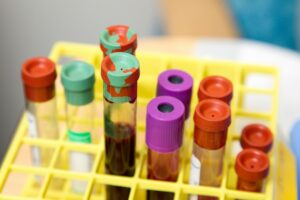
Iron deficiency anemia remains a common worldwide disease despite being easy to diagnose, and easy to treat in most individuals. In many places this is due to limited access to food, but even in the United States where food is considered abundant, an estimated 10 million people have a diagnosis of iron deficiency. The real number is likely much higher when you consider how many adults and children do not get properly, or routinely screened.
Why does low iron matter, and how much do you really need?
Without iron, our blood cannot transport oxygen to our brain, organs, skin, or any other tissue. It is an essential mineral, meaning without it, we cannot live. In addition to being involved in the production and maintenance of our blood, iron also plays a vital role in our immune system and tissue healing.
In adults, when a ferritin initially drops under 30, it is considered stage 1 iron deficiency. This precedes anemia, so basic labs look “normal,” and often an iron panel isn’t even ordered. Countless patients are left undiagnosed in the early stages of iron deficiency, and can go years without progressing into full anemia, all the while having mild, hard-to-pinpoint symptoms. Our goal is to catch iron deficiency early, before it spirals into anemia (low red blood cells and hemoglobin) and severe symptoms.
For optimal health, adults should aim for a ferritin (marker for stored iron) of 65 or higher. It is also important to make sure serum iron (the direct measurement) is close to 100, and saturation (how much iron is on transportation proteins) is greater than 20%
What are the symptoms of low iron?
Symptoms of low iron often develop slowly and can be very mild at first, making it hard to recognize. For most patients, it impacts multiple symptoms and can worsen over time:
-Unexplained daily fatigue
-Generalized weakness
-Frequent lightheadedness
-Poor exercise endurance
-Increased post-exercise soreness
-Unexplained shortness of breath
-Cold hands and feet
-Racing heart
-Frequent headaches
-Difficulty focusing
-Forgetfulness
-Slow healing wounds
-Pale skin, nail beds
-Hair thinning
-Brittle nails
-Heavy periods
-Easy bruising
-Geographic tongue
How can you improve your iron levels?
Understanding why your iron level is low will help your doctor to best correct it and keep you from sliding back into iron deficiency. Whether they discover that you only need short-term iron support, or in many cases, long-term support, the options for increasing iron are the same. You may need to take a combination approach:
Oral Iron: Can cause nausea, constipation and black stool. Not well absorbed or tolerated by all, but should be tried as the initial intervention. Available as both over-the-counter and prescription.
IV Iron: Fastest route for normalizing iron levels, but there is risk of allergic reaction. Potential insurance coverage for patients in advanced stages of iron deficiency, via Hematology. Available as a cash-pay IV for FIM patients.
Intramuscular Iron: Can cause skin discoloration, but well absorbed. Slower improvements than IV iron. Similar opportunities for insurance coverage via Hematology. Available as a cash-pay injection for FIM patients
Prescription Iron Cream: Available as a compounded prescription, weaker than other forms of iron therapy, but can be beneficial for some patients.
Iron Rich Foods: High quality meat, poultry, seafood, eggs. Plant-based sources include soybeans and other legumes, fortified grains, pumpkin seeds and leafy greens.
